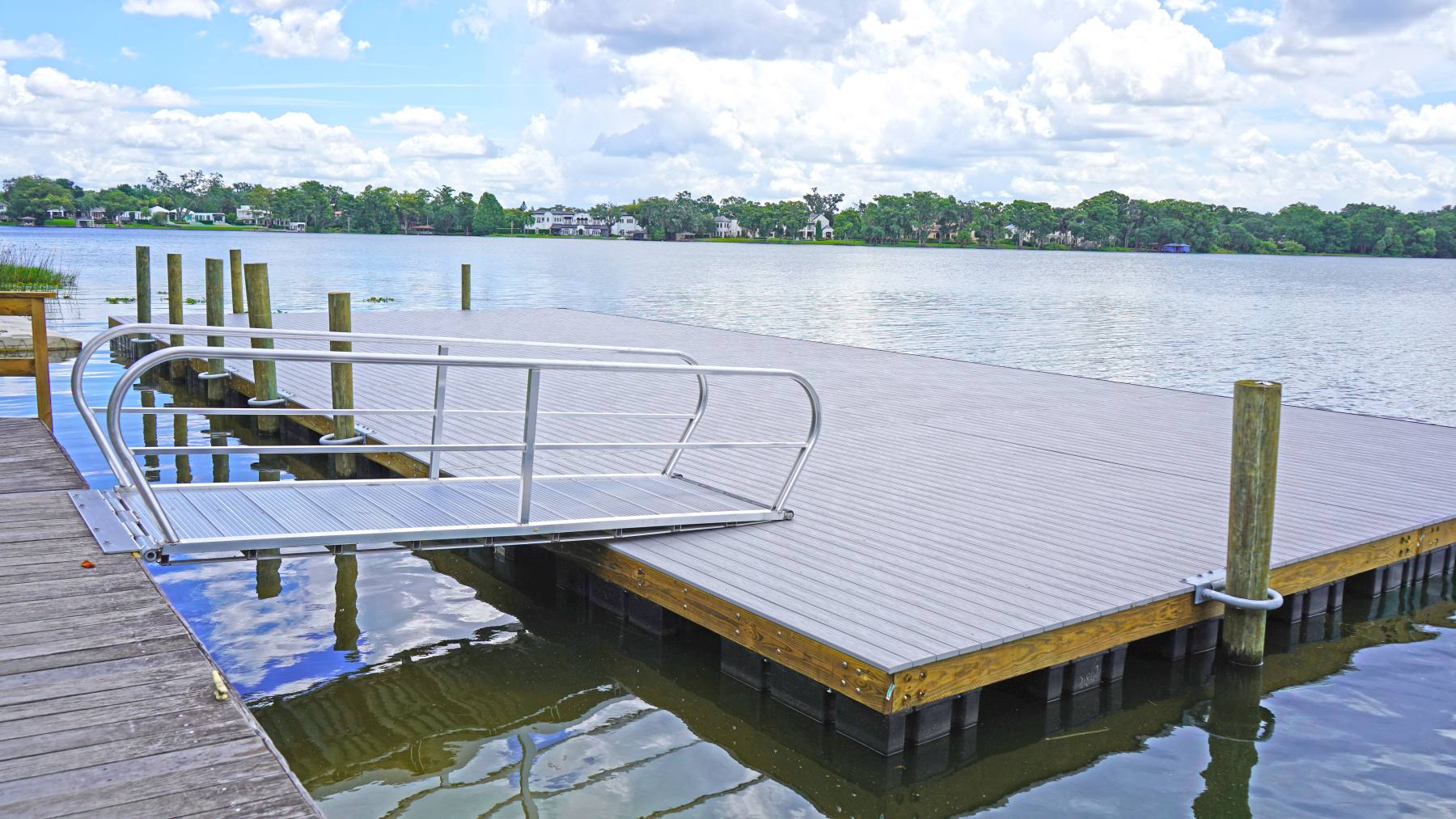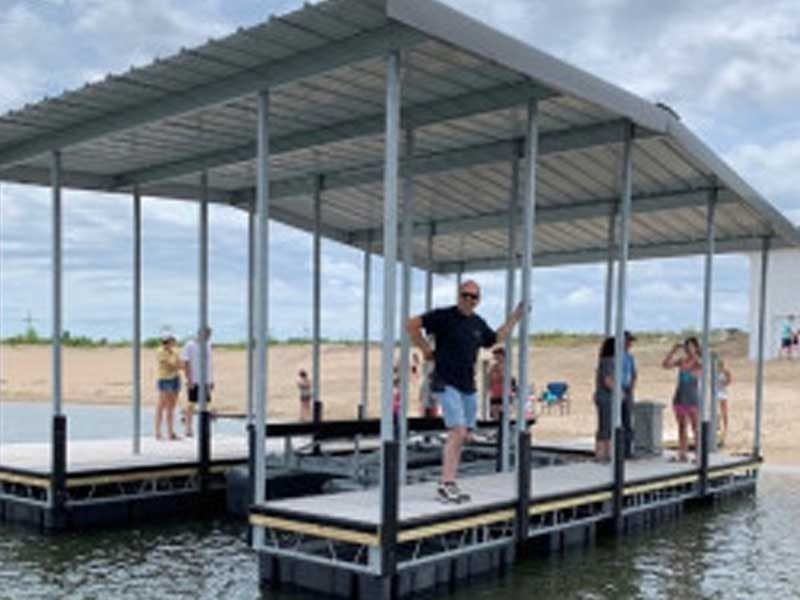Develop the Perfect Docking Solution With Floating Docks
Floating docks existing a flexible solution for a variety of maritime needs, adjusting effortlessly to changing water levels and diverse vessel types. As we explore the necessary components that contribute to the effectiveness of floating docks, several vital aspects relating to stability and upkeep will emerge, raising concerns about how to enhance your docking experience.

Benefits of Floating Docks
Floating docks deal various benefits that make them an optimal option for numerous maritime applications. Unlike fixed docks, floating docks surge and fall with the tide, guaranteeing regular accessibility for vessels.
Additionally, floating docks are normally easier and quicker to set up contrasted to standard fixed frameworks. Their modular design permits uncomplicated assembly and disassembly, facilitating upkeep and moving when needed. This flexibility is especially valuable for momentary applications or in environments where problems might transform.
Floating docks also often tend to be much more eco pleasant, as they reduce interruption to the seabed and bordering water ecological communities. Their buoyant nature minimizes the danger of damages to marine life, advertising a healthier atmosphere. These docks can be personalized to accommodate different vessel dimensions, making sure that they satisfy details operational requirements.
Ultimately, the combination of versatility, convenience of setup, and ecological considerations makes floating docks a highly efficient remedy for a variety of maritime requirements.
Picking the Right Products
Picking the ideal materials for floating docks is crucial to ensure longevity, durability, and security. The option of materials directly impacts the dock's efficiency in different ecological conditions, including direct exposure to water, sunshine, and potential wear from marine traffic.
Common products used for floating docks include light weight aluminum, wood, and high-density polyethylene (HDPE) Aluminum is lightweight, corrosion-resistant, and calls for marginal upkeep, making it an exceptional option for longevity. Its initial expense can be greater contrasted to various other products.
Wood, while cosmetically appealing and offering a typical appearance, can be at risk to rot and pest damages if not appropriately treated. Utilizing pressure-treated timber or normally durable types like cedar or redwood can mitigate these problems.
HDPE is a prominent selection as a result of its resistance to UV rays and chemicals, along with being eco-friendly. floating docks. It is offered and light-weight in numerous shades, permitting modification
Eventually, the ideal material choice will depend upon details requirements, including spending plan, wanted visual appeals, and environmental considerations. Mindful assessment of these aspects will cause a resilient and effective floating dock solution.
Layout Considerations for Security
When creating floating docks, making certain security is a basic aspect that can considerably affect their functionality and safety and security. Security in floating dock design is affected by different elements, including buoyancy, weight distribution, and the setup of parts.
Weight distribution is critical; uniformly distributing lots throughout the dock prevents tilting and boosts security. This can be attained with critical positioning of docking equipment, such as cleats and fenders, along with correct spacing of floats. In addition, the measurements of the dock ought to be attentively prepared. Bigger styles can offer enhanced stability, specifically in rough water conditions, while longer docks might require additional assistances to avoid drooping.
Another essential consideration is the ecological effect, consisting of wave activity and wind. Integrating features such as sidewalls or skirting can aid alleviate the effects of over here environmental pressures, keeping stability in negative problems. Ultimately, a mix of thoughtful design, product selection, and understanding of environmental variables will certainly produce a floating dock that satisfies both security and safety and security needs.
Setup Tips and Methods

Next, secure the essential permits and adhere to neighborhood policies, which may determine setup techniques and ecological factors to consider. If required, involve a certified specialist experienced in floating dock installments. Use top notch products made for aquatic environments to boost durability and long life.
When positioning the dock, align it alongside the shoreline to help with very easy accessibility. Make sure that the anchoring system is robust, employing cinder block or helical supports to stabilize the dock versus wind and wave action. It's crucial to make up seasonal water level variations, including potential ice motion in chillier climates.
During the setup, confirm the dock's floatation and security before finalizing the anchoring. On a regular basis check the installment for any type of signs of wear or damages. By adhering to these methods and tips, you can accomplish a safe and secure, functional, and cosmetically pleasing floating dock installment that fulfills your demands.
Maintenance and Care Guidelines
Maintaining and caring for floating docks is essential to prolonging their life-span and ensuring risk-free usage. Normal examinations check my blog should be carried out to Recommended Reading determine any kind of indicators of wear, damages, or aquatic development. Look for cracks, loose fittings, or stained areas on the dock's surface, as these problems can endanger architectural stability.
Cleansing is important. Use a stress washer to get rid of algae, barnacles, and particles, which can build up with time. For stubborn growth, take into consideration eco-friendly cleaning representatives that will not damage water life.
Furthermore, inspect the mooring lines and anchors frequently to ensure they are totally free and secure from corrosion. Change any kind of torn or damaged lines quickly to maintain security.
Throughout severe weather, such as storms or freezing problems, take preventive procedures. Protect the dock with additional mooring lines and, if viable, get rid of any type of removable elements to avoid damage.
Conclusion
In final thought, the execution of floating docks presents a reliable and flexible docking remedy appropriate for numerous maritime applications. With appropriate setup and normal upkeep, floating docks can supply reliable and trustworthy docking experiences for a vast range of vessels.
As we check out the essential elements that add to the performance of floating docks, a number of key variables relating to stability and maintenance will certainly emerge, increasing concerns concerning just how to optimize your docking experience. Unlike repaired docks, floating docks increase and loss with the trend, guaranteeing constant availability for vessels.When making floating docks, ensuring stability is a fundamental facet that can considerably impact their capability and safety and security. Security in floating dock design is influenced by various elements, including buoyancy, weight distribution, and the arrangement of components. Ultimately, a combination of thoughtful design, product option, and understanding of ecological variables will certainly generate a drifting dock that satisfies both stability and safety requirements.